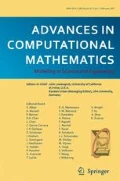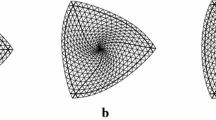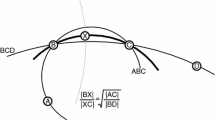Abstract
In this paper, a subdivision scheme consists of an operator froml ∞(ℤ) tol ∞(ℤ) determined by a doubly infinite sequence, called the mask. This operator convolutes, in a certain sense, sequencesλ ∈l ∞ (ℤ) with the mask, thus producing a new sequence inl ∞(ℤ). Moreover, this new sequence is placed on a finer grid. If we iterate this process with a positive mask infinitely many times, it is known that this process will produce a continuous function, which we callf λ. In this paper, we consider the extent to which non-negative masks yield similar results. An important application of subdivision schemes in computer graphics is the generation of curves and surfaces from an initial sequenceλ.
Similar content being viewed by others
References
W. Böhm, G. Farin and J. Kahmann, A survey of curve and surface methods in CAGD, Comput. Aided Geom. Design 1(1984)1–60.
A.S. Cavaretta and C.A. Micchelli, The design of curves and surfaces by subdivision algorithms, in:Mathematical Aspects of Computer Aided Geometric Design, ed. T. Lyche and L.L. Schumaker (Academic Press, Tampa, 1989).
A.S. Cavaretta, W. Dahmen and C.A. Micchelli,Stationary Subdivision, Memoirs of the Americal Mathematical Society 453 (1991).
C.A. Micchelli, Subdivision algorithms for curves and surfaces, Siggraph 86, Dallas, TX.
Author information
Authors and Affiliations
Rights and permissions
About this article
Cite this article
Gonsor, D.E. Subdivision algorithms with nonnegative masks generally converge. Adv Comput Math 1, 215–221 (1993). https://doi.org/10.1007/BF02071386
Received:
Revised:
Issue Date:
DOI: https://doi.org/10.1007/BF02071386




